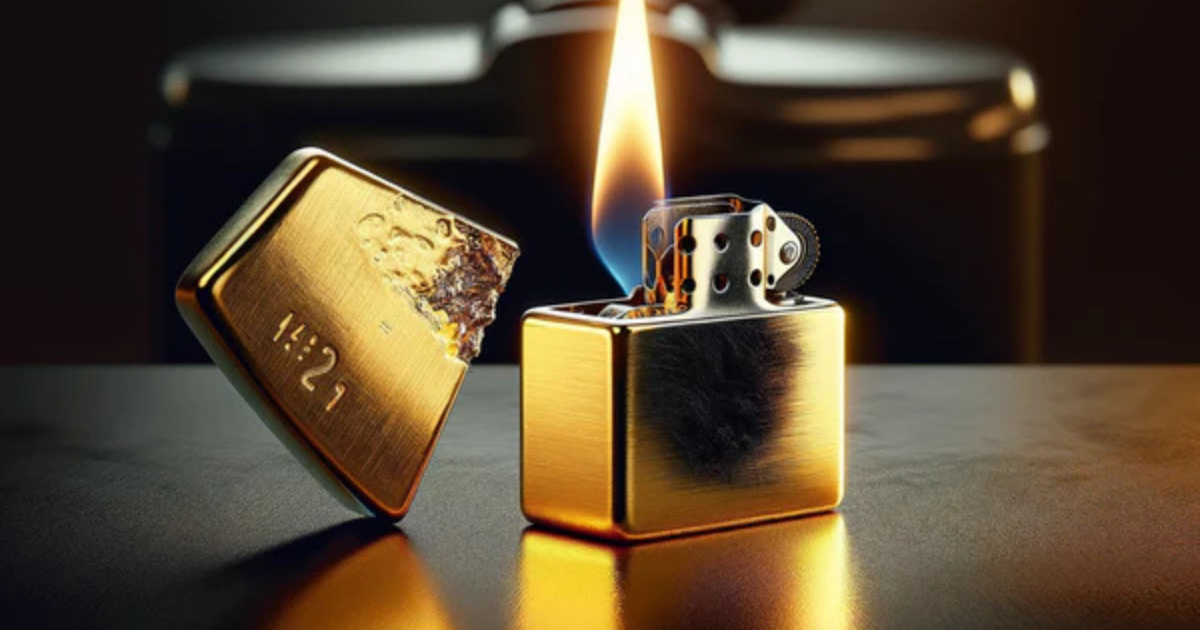Gold has long been valued for its luster, durability, and status as a symbol of wealth. However, with the prevalence of counterfeit gold and gold-plated items on the market, it’s essential to know how to verify its authenticity. One quick and simple method people often mention is testing gold with a lighter. While this method has its limitations, it can provide an initial insight into whether a piece of jewelry is genuine gold. This article will guide you through the steps, the science behind it, and safety tips to keep in mind.
Understanding the Basics of Gold
Gold is a noble metal that resists corrosion and does not tarnish under normal conditions. Its high density and malleability are key properties that distinguish it from imitations. Real gold has a melting point of 1,064°C (1,947°F), which makes it resistant to simple flame tests. Counterfeit items, on the other hand, may show changes when exposed to direct heat.
Why Use a Lighter to Test Gold?
Testing gold with a lighter is one of the simplest preliminary tests you can perform without specialized equipment. This method works by applying direct heat to the metal and observing how it reacts. While not foolproof, it can help you spot non-gold or gold-plated items that may react differently to heat.
How to Test Gold with a Lighter
Before starting, ensure you follow all safety precautions. Here’s a step-by-step guide:
Materials Needed:
- A standard butane lighter
- Protective gloves
- A non-flammable surface
- The gold item to be tested
Steps:
- Preparation: Place the gold item on a fireproof surface and put on protective gloves to prevent accidental burns.
- Heat Application: Hold the flame from the lighter approximately 1-2 cm away from the item and apply steady heat for 30-60 seconds.
- Observation:
- Real Gold: Authentic gold will not change color, melt, or produce any odor. It will retain its luster and shape.
- Fake Gold: Items made of other metals or coated with a thin layer of gold plating may show signs of darkening, melting, or emitting an odor due to the burning of other materials beneath the plating.
Understanding the Results
- No Change: If the gold piece does not change color, smoke, or melt, it is likely real gold. However, this test does not confirm the purity of gold; it merely suggests that the item is not counterfeit.
- Discoloration or Melting: If the item turns darker or melts easily, it is likely a fake or gold-plated piece made of a less resistant metal like brass or copper.
Limitations of the Lighter Test
While this method can provide some insight, it has notable limitations:
- Potential Damage: Using a lighter can damage gold-plated or delicate pieces, reducing their value.
- Imprecise Results: This test will not tell you the karat level or purity of the gold.
- Gold-Plated Items: Some gold-plated items can pass this test if the plating is thick enough, so further testing is needed for conclusive results.
Other Testing Methods to Confirm Gold Authenticity
For more precise results, consider using these alternative methods:
- Acid Test: A small scratch is made on the surface, and specific acid solutions are applied to verify purity.
- Magnet Test: Gold is non-magnetic, so if the item is attracted to a magnet, it likely contains other metals.
- Professional Appraisal: Jewelers have the tools and expertise to accurately determine gold purity using electronic testers and X-ray fluorescence (XRF) analysis.
Safety Tips for Using a Lighter to Test Gold
- Always perform the test in a well-ventilated area to avoid inhaling any potentially harmful fumes.
- Keep flammable materials away and have a fire extinguisher or water source nearby.
- Handle heated metal with caution as it can remain hot for a while after testing.
